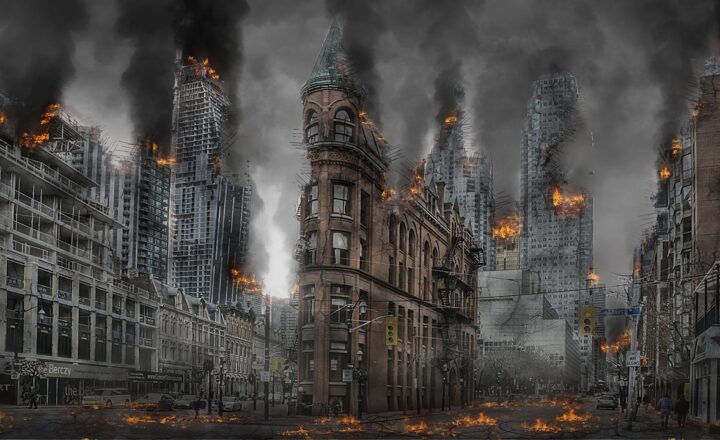The Craziest Weapons Ever Conceived and Why They Were Banned
November 11, 2024

Throughout history, humanity has showcased an incredible array of creativity, especially when it comes to weaponry. While some inventions have been crucial for defense and survival, others crossed ethical lines and raised concerns about their potential for mass destruction and suffering. In this exploration, we delve into some of the most outrageous and bizarre weapons ever conceived and the reasons behind their bans.
1. The Guatemalan Death Plane
During the Guatemalan Civil War, between 1960 and 1996, one of the creepiest methods used by the military was the so-called “Death Plane.” This scheme involved flying planes over remote areas and dropping bags filled with live hand grenades. This was done indiscriminately, aiming to instill terror in the populace and eliminate insurgents hiding in the jungle. The horrific strategy resulted in many civilian casualties and was widely condemned on international platforms, leading to the cessation of such tactics.
A ban was enacted not only on the specific use of these planes but on various methods of aerial bombardment targeting non-combatants.
2. The Barrel Bomb
Barrel bombs are crude, improvised explosive devices made from large metal barrels filled with explosives and shrapnel. They are typically dropped from helicopters or planes over populated areas.
While their use was officially designed to combat insurgents in conflicts such as the Syrian civil war, they have become infamous for their indiscriminate destruction and significant civilian casualties. This led to international outcry and condemnation, prompting various human rights organizations to call for a ban due to their nature of creating wide-reaching havoc and terror, violating the principles of proportionality and distinction in warfare.
3. The Tsar Bomba
The Tsar Bomba was the largest nuclear bomb ever detonated. Tested by the Soviet Union in 1961, it had a yield of 50 megatons, which is about 3,800 times more powerful than the bomb dropped on Hiroshima. The test resulted in ground shaking and windows shattering over a thousand kilometers away. This level of destruction and the real threat of catastrophic nuclear warfare spawned a wave of disarmament agreements and treaties.
Subsequently, the global community recognized the need to limit nuclear arms, ensuring that such devastating weapons would not be used again. Therefore, any further testing of nuclear weapons of this magnitude has been banned under international treaties.
4. The AK-47 with Bayonet Attachment
While the AK-47 is one of the most recognized firearms globally, some modifications to the weapon have sparked debates about ethical warfare. The bayonet attachment, designed for close combat, transforms a firearm into a brutal stabbing weapon. The combination of bullet firing and stabbing capabilities has led to discussions surrounding the weapon’s humane use.
Numerous countries have outlawed the use of firearms with certain enhancements for civilian use, fearing that bayonet-equipped firearms could escalate violence in everyday conflicts and criminal activity.
5. The Vortex Cannon
The Vortex Cannon is a fascinating yet potentially dangerous invention that creates large rings of smoke or air that can knock a person off their feet. It was mostly experimented with for fun, but its destructive capability raised eyebrows. Some theorized that it could disperse crowds or damage structures without traditional weaponry.
Due to its unconventional use, many countries have restricted its use in civilian settings, as it can cause irritation, fear, and unintended harm. It exemplifies how even inventions that seem benign can lead to harmful intentions.
6. The Acoustic Weapons
Acoustic weapons, specifically designed to fire sound waves, can induce pain without any physical harm. Attempts to develop such weapons, like the Active Denial System, have been controversial due to their unknown long-term effects on human health.
The technology was developed for crowd control but has faced condemnation and calls for banning due to ethical concerns about the potential for psychological harm and the violation of human rights.
7. Chemical and Biological Weapons
The deployment of chemical and biological weapons is widely condemned. These weapons cause indiscriminate harm and suffering, impacting not just combatants but entire populations and ecosystems. Used historically in World War I and during various conflicts, the unconscionable nature of these attacks led to international treaties banning their use, including the Chemical Weapons Convention and the Biological Weapons Convention.
The rationale behind these bans is rooted in humanity’s understanding of ethics and the protection of life, preventing humanitarian crises and ensuring global stability.
Conclusion
The creation and use of weaponry reflect not only a nation’s military objectives but also its humanity, or lack thereof. The outrageous designs of various banned weapons remind us of the delicate balance between innovation and morality in warfare. Creating weapons that induce excessive suffering or act indiscriminately breaks the fundamental principles of humanity and ethics.
As the world carries on into the future, understanding the past enables us to forge a more peaceful and responsible approach to conflict resolution, ensuring that creativity does not become the antagonist in our shared human narrative.







